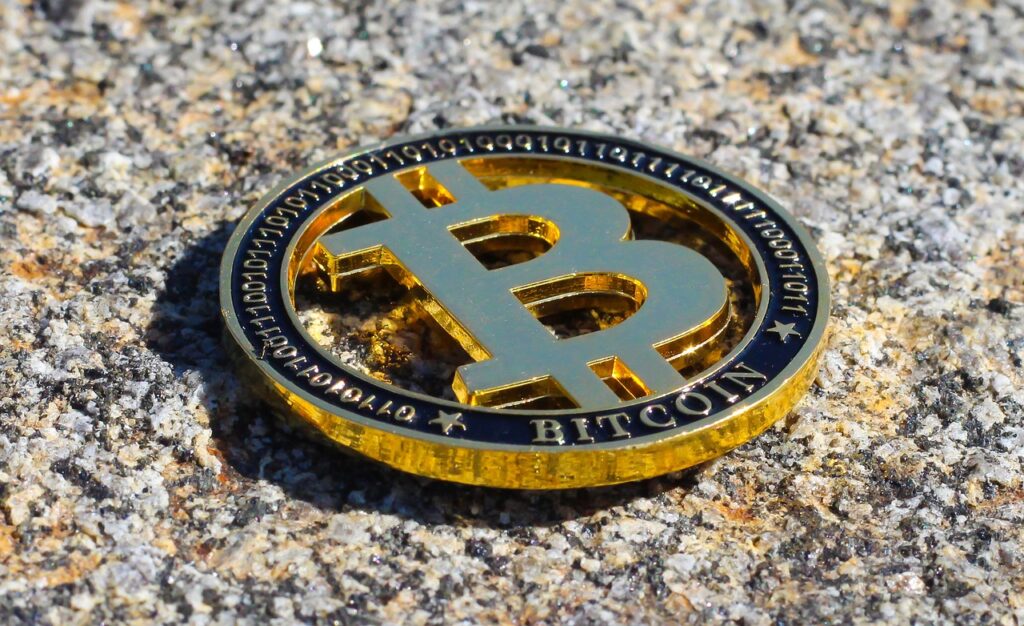Main Points:
- U.S. CPI exceeded expectations at a 3% YoY increase, pushing U.S. long-term interest rates higher and influencing the crypto market.
- Bitcoin rebounded after an initial dip to trade at approximately $97,539, bolstered by persistent institutional demand.
- Despite tightening monetary conditions, institutional investors continue to back Bitcoin ETFs as a potential hedge against inflation and dollar depreciation.
- State-level initiatives in the U.S. are accelerating legislative moves toward strategic Bitcoin reserve policies, potentially prompting significant institutional purchases.
- Coinbase Premium has turned positive, indicating robust buy-side interest from U.S. institutions.
- Ethereum shows signs of long-term holding with record outflows from exchanges and an increase in whale wallet counts.
- Multiple Solana ETF applications are under review, reflecting growing optimism and regulatory momentum for alternative blockchain assets.
I. Market Reaction to U.S. Inflation Data
The U.S. Consumer Price Index (CPI) for January exceeded market forecasts by reaching a 3% year-over-year increase. This uptick in inflation has had wide-reaching effects on financial markets, including the crypto sector. With higher inflation figures, U.S. long-term interest rates began to rise, creating ripples throughout global asset classes. Initially, Bitcoin experienced a sharp decline as markets reacted to the news. However, this was swiftly followed by a robust recovery, with Bitcoin trading at approximately $97,539—a 2.3% increase from the previous day. The initial reaction was largely due to concerns that the higher-than-expected inflation might force the Federal Reserve to continue a more hawkish stance, thereby constricting liquidity in risk assets.
This market movement is significant because it underscores the sensitivity of crypto assets to broader macroeconomic trends. The rise in inflation and subsequent increase in long-term interest rates have historically led investors to reevaluate risk exposures. Yet, Bitcoin’s resilience, despite the initial sell-off, hints at a growing perception among market participants of its role as an inflation hedge. Institutional investors, in particular, have started viewing Bitcoin not just as a speculative asset but as a strategic component of diversified portfolios in times of economic uncertainty.
II. Institutional Dynamics and Bitcoin’s Resilience
In recent years, Bitcoin has increasingly been recognized as a digital store of value, especially in an environment marked by fluctuating interest rates and currency devaluation pressures. The Federal Reserve Chair Jerome Powell’s recent indication to maintain policy rates until inflation shows sustained moderation has further reinforced investor caution. While some market observers have speculated about the possibility of future rate hikes—an environment that typically squeezes liquidity and drives investors away from riskier assets—the ongoing demand for Bitcoin ETFs has suggested otherwise.
Institutional investors appear to be betting on the long-term benefits of Bitcoin, even amidst a tightening monetary environment. With the advent of Bitcoin ETFs, institutional players are provided with a regulated channel to invest in the cryptocurrency market. This development has encouraged a shift in the traditional investment paradigms, where digital assets are now considered viable hedges against inflation and even potential depreciations of the U.S. dollar. As the relationship between Bitcoin and the U.S. Dollar Index (DXY) begins to decouple—historically an inverse correlation—the narrative around Bitcoin’s defensive qualities is being redefined.
Furthermore, many institutions are adopting more conservative strategies, yet they continue to allocate funds toward Bitcoin in recognition of its unique attributes. Despite the potential headwinds from rising interest rates, Bitcoin’s perceived stability and its emerging role as a safe-haven asset during times of economic turbulence have kept institutional demand robust. This trend is crucial for the overall health and future growth of the cryptocurrency market, as institutional backing often leads to higher liquidity and increased market credibility.
III. State-Level Bitcoin Reserve Initiatives
A notable development within the United States is the growing momentum behind state-level strategic Bitcoin reserve policies. Several states are now actively engaging in legislative discussions and committee approvals that focus on establishing Bitcoin as a part of state reserve portfolios. The concept behind these initiatives is to leverage Bitcoin’s potential as an inflation hedge and a safeguard against the depreciating value of the U.S. dollar.
Major asset management firms, such as VanEck, have speculated that these state-level proposals could potentially trigger a wave of Bitcoin purchases, estimated at around $23 billion. This strategic move by states is seen as a proactive measure to diversify reserves and mitigate the risks associated with traditional fiat currencies, especially in times of rising inflation and geopolitical uncertainty.
These initiatives reflect a broader trend toward the adoption of blockchain-based assets in public finance. As states look to secure their financial futures, incorporating Bitcoin into their reserve strategies is increasingly viewed as a prudent, forward-thinking decision. The long-term implications of such policies could be profound, potentially establishing Bitcoin as a key component in the national financial architecture.

IV. Coinbase Premium and Institutional Buying
One of the more technical yet telling indicators in the current crypto landscape is the turnaround in the Coinbase Premium Index. This index, which compares the Bitcoin trading prices on Coinbase with those on other major exchanges, shifted from negative to positive territory in recent weeks. Over the course of a week, the index moved from -0.024 to 0.013, signaling that Bitcoin on Coinbase was trading at a premium compared to other platforms.
This positive shift is interpreted as a sign of strong buy-side demand from U.S. institutional investors. When institutions are actively buying, they often do so through regulated channels like Coinbase, which offers a secure and compliant trading environment. The premium is, therefore, not merely a price discrepancy but an indication of robust institutional participation. Such institutional interest is expected to persist, further solidifying Bitcoin’s position in the investment community and providing additional support to its price levels, even in an environment marked by broader economic challenges.
V. Ethereum’s Long-Term Holding Dynamics
While Bitcoin continues to capture headlines, Ethereum remains an integral part of the crypto ecosystem, especially as a platform for decentralized applications (dApps) and smart contracts. Recent data from Santiment has highlighted a significant trend in Ethereum’s trading activity: over a 24-hour period spanning February 8-9, approximately 224,410 ETH—worth around $600 million—was withdrawn from exchanges. This represents the largest net outflow from exchanges in the past year.
Such a sizable outflow suggests that investors are increasingly inclined toward long-term holding strategies, opting to store their assets in private wallets rather than leave them vulnerable on exchanges. This shift in behavior is further supported by an observed 2.3% increase in the number of wallets holding more than 10,000 ETH, often referred to as “whale” wallets. Large-scale holders are likely preparing for a bullish run or are simply confident in Ethereum’s long-term potential. With the increasing adoption of Ethereum for various decentralized finance (DeFi) applications, the trend toward accumulation rather than active trading is a positive signal for its future growth prospects.
VI. Surge in Solana ETF Applications
Adding another layer of dynamism to the crypto market is the surge in applications for Solana (SOL) ETFs, currently under review by the U.S. Securities and Exchange Commission (SEC). Leading asset management companies such as Canary Capital, VanEck, 21Shares, and Bitwise have submitted applications, reflecting a growing institutional appetite for diversification beyond Bitcoin and Ethereum.
The momentum behind Solana ETFs was further boosted last week when the SEC approved Grayscale’s application for a Solana ETF, prompting a 21-day public comment period for the NYSE Arca listing of the Grayscale Solana Trust. This move is expected to pave the way for other major players like Franklin Templeton, which recently registered the Franklin Solana Trust in Delaware. According to predictions by Polymarket, the approval probability for a Solana ETF by the end of 2025 stands at an impressive 83%. Although some Bloomberg analysts maintain that a Litecoin (LTC) ETF might have a higher likelihood of approval compared to Solana or XRP ETFs, the growing number of applications highlights a broader trend: institutional investors are keen to explore innovative blockchain assets that offer unique value propositions.
VII. Recent Trends and Broader Crypto Market Developments
Beyond the immediate headlines, several recent trends have started to shape the broader crypto ecosystem. The interplay between traditional financial indicators—such as the U.S. CPI and long-term interest rates—and crypto asset performance has underscored the sector’s increasing integration into mainstream finance. Bitcoin’s behavior, for instance, is now less tethered to the movements of the U.S. Dollar Index (DXY) than it once was, suggesting that its value is being influenced more by its perceived merits as an inflation hedge and store of value than by direct macroeconomic correlations.
In parallel, the digital asset market has seen a growing emphasis on regulatory clarity and institutional-grade infrastructure. The approval of various ETF applications and the establishment of regulated trading platforms have contributed to this maturation process. Investors are now paying closer attention to factors such as security, custody solutions, and compliance standards, which are gradually transforming the crypto space into a more stable and reliable market.
Furthermore, developments in decentralized finance (DeFi) continue to capture investor interest. With an increasing number of platforms offering yield farming, staking, and decentralized lending services, there is a notable shift in how crypto assets are being utilized. These applications not only provide additional revenue streams but also promote a more integrated ecosystem where the utility of cryptocurrencies extends beyond simple speculative trading.
Additionally, geopolitical developments, such as recent diplomatic engagements and shifting international alliances, are contributing to a reassessment of risk and opportunity in both traditional and digital asset classes. For instance, the recent agreement between President Donald Trump and Russian President Vladimir Putin to initiate negotiations aimed at ending the Russia-Ukraine conflict has alleviated some of the geopolitical risks that had previously weighed on the markets. Such developments are gradually restoring investor confidence, paving the way for increased participation in crypto markets by both retail and institutional players.
VIII. A Comprehensive Outlook on the Evolving Crypto Landscape
In summary, the recent developments in the crypto market—sparked by stronger-than-expected U.S. inflation figures, evolving monetary policies, and dynamic institutional participation—paint an optimistic picture for the future of digital assets. Bitcoin’s resilient performance at around $97,539 amid rising U.S. long-term interest rates and a strengthening dollar underscores its emerging role as a reliable store of value and a hedge against inflation. Institutional investors are not only continuing to invest in Bitcoin ETFs but are also diversifying their portfolios by exploring alternative assets such as Ethereum and Solana.
State-level initiatives aimed at incorporating Bitcoin into public reserve strategies further amplify the significance of these trends. Coupled with technical indicators like the turnaround in Coinbase Premium and the notable outflows from Ethereum exchanges, these developments collectively signal a maturation of the crypto market. Moreover, the wave of Solana ETF applications, along with heightened regulatory clarity, is opening up new avenues for institutional participation, thereby broadening the market’s appeal.
As the crypto landscape continues to evolve, investors—whether seeking innovative digital assets, alternative revenue sources, or practical blockchain applications—are advised to stay informed about these trends. The integration of macroeconomic signals, regulatory developments, and institutional strategies will likely shape the future of digital finance, providing both opportunities and challenges in equal measure. The comprehensive outlook, therefore, remains one of cautious optimism, with the potential for significant long-term growth in a market that is rapidly transitioning from its nascent stages into a fully mature asset class.


